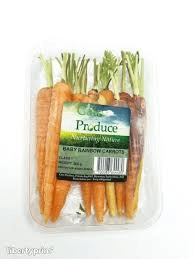Processing, packaging, and exporting carrots involves a series of steps designed to ensure their quality and safety throughout the supply chain. This guide provides a comprehensive overview of each stage, from harvesting to final shipment, offering practical advice on how to handle carrots to meet export standards and maximize profitability.
Start by harvesting carrots when they are fully grown and firm, pulling them gently to avoid damage. Next, wash the carrots thoroughly with clean, cold water to remove dirt. Sorting is crucial—group carrots by size, shape, and quality, discarding any that are damaged.
Depending on market needs, you might peel the carrots to enhance their appearance or cut them into specific shapes. Blanching, which involves briefly boiling and then cooling the carrots, helps preserve their color and texture, while drying reduces moisture and prevents mold.
Once processed, package the carrots in clean, food-grade containers, label them with essential information, and store them in a cool, dry place.
Select durable, food-grade packaging materials such as plastic bags, cartons, or crates. Ensure the packaging is clean and dry before use. Pack the carrots carefully to avoid crushing and seal the packages tightly to keep out air and moisture.
Labels should include details like the product name, weight, packing date, and destination. For bulk shipments, use pallets to facilitate handling and transport. Verify that the packaging meets the export requirements of the destination country and conduct quality checks to address any issues before shipping.
Prepare all necessary documentation and store the packaged carrots in a suitable environment until they are ready for export.
Research the demand for carrots in your target markets and understand their preferences and requirements. Ensure compliance with export regulations by obtaining the necessary permits and certifications. Build relationships with buyers and set competitive pricing based on production costs and market rates.
Plan logistics carefully, including transportation and customs procedures. Prepare accurate export documentation and monitor the quality of your product. Promote your carrots through various channels to reach potential buyers, manage your finances effectively, and seek feedback to continually improve your offerings.
How to Process Carrots for Exportation

1. Harvesting: Carrots should be harvested when they reach full size and are firm. They should be pulled gently from the soil to avoid breaking.
2. Washing: After harvesting, wash the carrots thoroughly to remove soil and dirt. Use clean, cold water and avoid soaking them for too long.
3. Sorting: Sort carrots by size, shape, and quality. Remove any damaged or diseased carrots as they can affect the overall quality.
4. Peeling (Optional): Depending on the market requirements, peel the carrots to improve their appearance and remove any outer layer that may be damaged.
5. Cutting (Optional): If required, cut carrots into desired shapes or sizes. This could be into rounds, sticks, or other forms depending on the export specifications.
6. Blanching (Optional): Blanching involves briefly boiling carrots and then cooling them rapidly. This process helps in preserving color and texture during transport.
7. Drying (Optional): If necessary, dry the carrots to reduce moisture and prevent mold growth. Use a drying machine or air-dry in a clean, cool place.
8. Packaging: Place the processed carrots into clean, food-grade containers or bags. Ensure that the packaging is airtight to maintain freshness.
9. Labeling: Clearly label the packages with information such as the product name, weight, and date of processing. This is important for compliance and traceability.
10. Storing: Store the packaged carrots in a cool, dry place until they are ready for export. Maintaining proper storage conditions is crucial for preserving quality.
Read Also: Economic Importance and Uses of Cattle Meat
How to Package Carrots for Exportation

1. Choose Packaging Materials: Select food-grade packaging materials like plastic bags, cartons, or crates that are durable and suitable for carrots.
2. Prepare the Packaging: Ensure that the packaging materials are clean and dry before use. This helps in maintaining the carrots’ quality.
3. Pack Carrots Properly: Place carrots into the packaging materials in a manner that avoids crushing or damaging them. Use dividers or cushioning if necessary.
4. Seal the Packages: Seal the packages tightly to prevent any air or moisture from entering. This helps in extending the shelf life of the carrots.
5. Include Labels: Attach labels to each package with information such as product name, weight, packing date, and destination.
6. Use Pallets: For bulk shipments, place packages on pallets to facilitate handling and transport. Ensure the pallets are in good condition and suitable for the weight of the packages.
7. Check for Compliance: Verify that the packaging meets the export requirements of the destination country. This includes any specific packaging standards or regulations.
8. Conduct Quality Checks: Inspect the packaged carrots for any signs of damage or quality issues before shipping. Reject any packages that do not meet the standards.
9. Document the Shipment: Prepare and review all necessary shipping documents, including export permits and invoices, to ensure a smooth export process.
10. Store Before Shipping: Keep the packaged carrots in a cool, dry storage area until they are ready to be shipped. This helps in maintaining their freshness.
How to Export Carrots for Profits
1. Research Market Demand: Identify target markets and research their demand for carrots. Understand the preferences and requirements of potential buyers.
2. Comply with Regulations: Ensure compliance with export regulations and standards of the destination country. This includes obtaining necessary permits and certifications.
3. Establish Relationships: Build relationships with buyers or distributors in the target markets. Networking can help in securing better deals and understanding market needs.
4. Set Competitive Pricing: Determine a pricing strategy based on production costs, market rates, and competitor pricing. Ensure that your pricing is competitive yet profitable.
5. Plan Logistics: Arrange for transportation and logistics, including shipping methods and routes. Consider factors such as shipping times, costs, and customs procedures.
6. Prepare Documentation: Complete all necessary export documentation, including bills of lading, invoices, and certificates of origin. Accurate documentation is crucial for smooth customs clearance.
7. Monitor Quality: Continuously monitor the quality of carrots during processing and packaging. High quality is essential for maintaining buyer satisfaction and repeat business.
8. Promote Your Product: Market your carrots through various channels, including online platforms, trade shows, and industry events. Effective marketing can help in reaching potential buyers.
9. Manage Finances: Keep track of expenses, revenues, and profits. Proper financial management ensures that the export business remains profitable and sustainable.
10. Seek Feedback: After each export shipment, seek feedback from buyers to improve your product and services. Understanding customer preferences can help in making necessary adjustments.
Read Also: The Reproductive Rate of Cattle
Frequently Asked Questions (FAQ’s) About Carrots

1. What is the best time to harvest carrots?
Harvest carrots when they have reached their full size and are firm. This is usually 70-80 days after planting.
2. How should carrots be washed before export?
Wash carrots thoroughly with clean, cold water to remove soil and dirt. Avoid soaking them for too long.
3. Is peeling carrots necessary for export?
Peeling is optional and depends on the market requirements. Peeling can improve the appearance but may not be needed for all markets.
4. What is blanching and why is it done?
Blanching involves briefly boiling carrots and then cooling them rapidly. It helps preserve color and texture during transport.
5. How can I dry carrots for export?
Dry carrots using a drying machine or air-dry in a clean, cool place. This reduces moisture and prevents mold growth.
6. What types of packaging are suitable for carrots?
Food-grade plastic bags, cartons, and crates are commonly used. Packaging should be durable and suitable for maintaining freshness.
7. How should packages be sealed for export?
Seal packages tightly to prevent air or moisture from entering. This extends the shelf life of the carrots.
8. What information should be included on labels?
Labels should include product name, weight, packing date, and destination. This ensures compliance and traceability.
9. How can I ensure compliance with export regulations?
Research and understand the regulations of the destination country, obtain necessary permits, and prepare accurate documentation.
10. What are key factors in pricing carrots for export?
Consider production costs, market rates, competitor pricing, and desired profit margins when setting prices for export.
Read Also: Potato Farming Guide – 7 Tips to Grow Sacks Full of Potatoes

